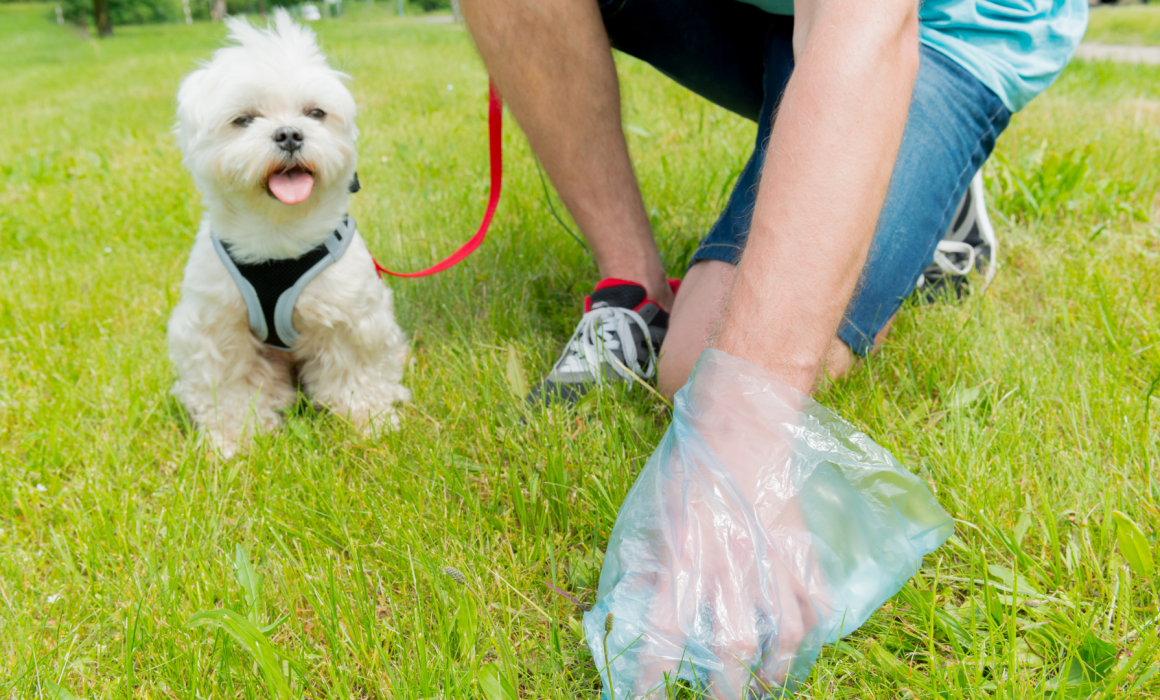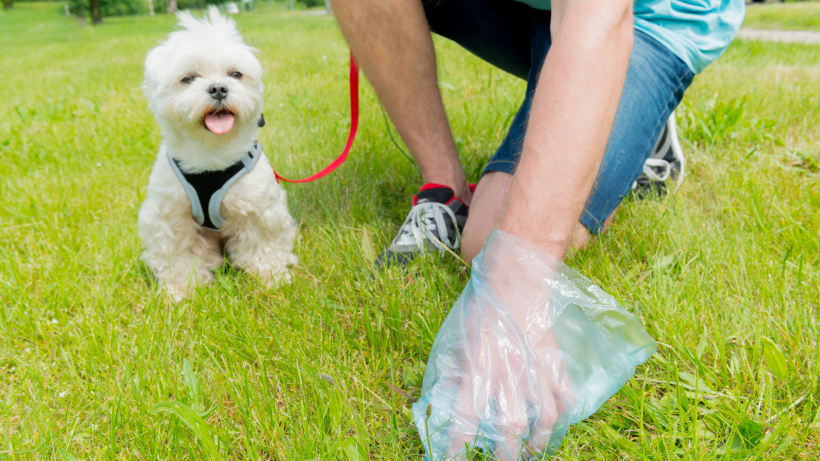The Scoop on Dog Poop
Our furry four-legged friends are more than just that. They are companions and family. We enjoy sharing activities like walking and hiking with them. Unfortunately, dogs go wherever and whenever they need.

Some dog owners choose to leave it there, others bury it under leaves, some pick it up in a doggy poo bag but then leave it on the trail so others must pick it up and carry it out. You may think that all animal fecal matter is organic and is okay to leave in nature; however, not all poop is created equal.
In 1996, the Home and Garden Information Center (HGIC) and the University of Maryland Cooperative Extension survey1 of dog owners listed reasons for not picking up their dog waste as: “Because it eventually goes away,” “just because,” “too much work,” “on edge of my property,” “it’s in my yard,” “it’s in the woods,” “not prepared,” “no reason,” “small dog, small waste,” “use as a fertilizer,” “sanitary reasons,” “own a cat or other kind of pet.” According to the survey, which was conducted in the Chesapeake Bay watershed, 44% of dog walkers would still refuse to take care of their dog’s waste if confronted by complaints, threatened with fines, or provided with sanitary or convenient options.
The American Veterinary Medical Association estimated in 2017-2018 that there were 76.8 million dogs in households within the United States. One gram of dog poop contains about 23 million coliform bacteria, twice that of human feces. Some bacteria and parasites can survive in the soil for up to four years. Although most coliform bacteria, with the exception of E. Coli, are harmless to humans, they are used an indicator of water quality. Other harmful pathogens include roundworms, giardia, and salmonella. Since 1991, the Environmental Protection Agency (EPA) has labeled dog poop as a non-point source pollutant alongside herbicides, pesticides, and motor vehicle chemicals. Studies have found that 20% to 30% of bacteria found in urban watersheds were contributed by dog feces.
In addition to the bacteria found in fecal matter, nutrients not absorbed by the dog can enter the environment. Most of these are found naturally; however, in high concentrations an excess of nutrients can cause harmful algae blooms and promote weed growth. As these plants decay, they use the oxygen in the water that aquatic species need to survive.
So what do we do with all the poo?
A popular solution found available at many parks are biodegradable waste bags. However, these bags are designed to be composted. Most end up in landfills where they break down and produce methane, a greenhouse gas. The EPA recommends flushing waste matter in specially designed bags to prevent clogging. But the extra fecal matter could put a strain on the water treatment system. Composting at home rarely meets the heat requirement to kill harmful pathogens. Commercial composting facilities are already processing a large amount of fecal matter in lawn trimmings. These facilities can reach the temperatures and take the time needed to render the material harmless.
Being a good dog owner means more than feeding, caring for, and loving your dog. Teatown is open to dogs of all sizes, colors, and poop load. But be a responsible owner and visitor: bag the poop and dispose of the bag properly, and make the experience of walking our trails, or your own neighborhood, pleasant for all!
1. Home and Garden Information Center (HGIC). 1996. Residential Fertilizer Use Survey. University of Maryland Cooperative Extension. College Park, MD. Unpublished Surveys.

About the Author
Elissa Schilmeister
Environmental Educator and Volunteer Coordinator
Elissa has been involved with Teatown for 26 years as a camper, volunteer, and staff member. She is a New York State Licensed Wildlife Rehabilitator and a NYS/NREMT Paramedic. Elissa has many interests including herpetology, travel, photography, and learning new things.



Leave a Reply